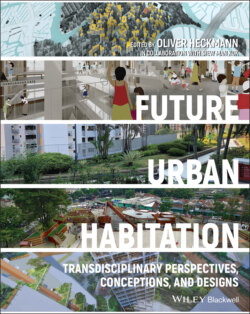Читать книгу Future Urban Habitation - Группа авторов - Страница 24
The Care Challenge in Barcelona During Uncertain Times
ОглавлениеFrom Ildefons Cerdà's innovative proposals in the mid‐nineteenth century, which would result in the famous grid‐like urban structure that is so characteristic of the city, to the transformations for the Barcelona ’92 Olympic Games and to the present day, Barcelona has shown it is a creative city that is open to change. Today, all kinds of phenomena that characterize our times are once again forcing the city to not only consider ingenious urban planning changes, taking into account that the space available in the city is limited, but more especially – and concerning this chapter – the redesigning of services for people and examining the interaction between the physical and social aspects.
In recent years the Area of Social Rights of the Barcelona City Council has been equipped with a unit of talented economists, geographers, and sociologists to comprehensively address social challenges the city is facing. This unit works as an intersection between social work practitioners (social and educational workers, psychologists), who stay on the field, and politicians, who have to make evidence‐based decisions in coherence with their ideology. To do this, it is key to have access to data, statistical knowledge, and appropriate theoretical approaches to understand the trends behind change. Experience reveals us that being aware of interactions between urban space‐oriented social policies, such as inclusive urbanism planning, and individual‐oriented policies (e.g. income guarantee schemes or social, health, and educational policies) can help policymakers to make effective and efficient decisions.
In the current uncertain times, Barcelona is experiencing a demographic phenomena that requires new approaches if it is to be adequately dealt with (Ajuntament de Barcelona 2018b). The city's population is getting older (Various Authors 2020). In a city with over 1.6 million inhabitants, the people aged 65 or over represent 21.3% of the population (almost 350 000 people), while people aged 75 or over represent 11.2%. Demographic projections (Ajuntament de Barcelona 2018a) foresee progressive ageing with population concentrations in the 75–79 age group. By 2030, it is estimated that 8.3% of the population will be 80 years old or more. So the city is facing a crisis in care that mainly concerns how to tackle the care of senior citizens today, because there will be increasing numbers of them, they will be older and they will be in increasingly dependent situations. Today, we urgently need to adapt the city's social model, basing it on innovative policies that, in the short and medium term, improve the sustainability of care for an ageing population. How is Barcelona preparing to deal with this challenge?
Using data from 2018 (Ajuntament de Barcelona 2018a), in Barcelona there are 13 000 places in elderly care homes (42% 0f them are public). There are around 6000 people on the waiting list for public‐sector places (only open to people with a high degree of dependence). Half of these people continue to live in their own homes while they wait for a place. However, it seems like that most of the city's elderly people will live the maximum possible amount of their lives in their own homes, either because they wish to do so or because they do not have access to a place in an old people's home, and only some of them will be able to receive care at home through public services. Furthermore, there is also the fact that in Barcelona today there are more than 90 000 people aged 65 or over who live alone (76.2% of them are women) and if we look at an even older age group, 75 or over, we see that there are nearly 58 000 (80% of whom are women). These single‐person dwellings represent 13.6 and 8.7% of Barcelona households, respectively (BCNEcologia 2019).
Home care service has therefore become a priority challenge. The recent COVID‐19 crisis will clearly add weight to this priority. The current model used for elderly care homes will probably have to be reconsidered. The crisis has exposed major shortcomings in service quality, and above all, characteristics that are far from optimal for dealing with epidemics or pandemics, for example, an architectural design based on small, shared rooms, which is incompatible with social distancing and confinement measures. The following sections deal with how to organize care for senior citizens who are still living in their own homes in Barcelona: from the more traditional model to the new proposals that are now being implemented.
